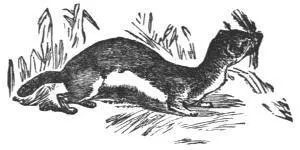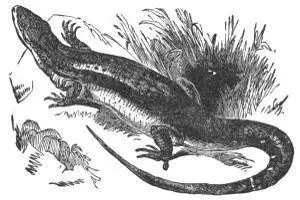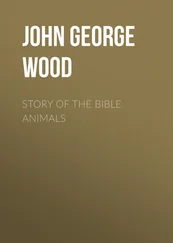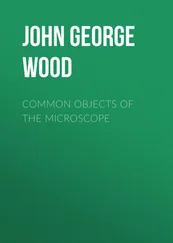John George Wood - The Common Objects of the Country
Здесь есть возможность читать онлайн «John George Wood - The Common Objects of the Country» — ознакомительный отрывок электронной книги совершенно бесплатно, а после прочтения отрывка купить полную версию. В некоторых случаях можно слушать аудио, скачать через торрент в формате fb2 и присутствует краткое содержание. Жанр: foreign_prose, foreign_antique, на английском языке. Описание произведения, (предисловие) а так же отзывы посетителей доступны на портале библиотеки ЛибКат.
- Название:The Common Objects of the Country
- Автор:
- Жанр:
- Год:неизвестен
- ISBN:нет данных
- Рейтинг книги:4 / 5. Голосов: 1
-
Избранное:Добавить в избранное
- Отзывы:
-
Ваша оценка:
- 80
- 1
- 2
- 3
- 4
- 5
The Common Objects of the Country: краткое содержание, описание и аннотация
Предлагаем к чтению аннотацию, описание, краткое содержание или предисловие (зависит от того, что написал сам автор книги «The Common Objects of the Country»). Если вы не нашли необходимую информацию о книге — напишите в комментариях, мы постараемся отыскать её.
The Common Objects of the Country — читать онлайн ознакомительный отрывок
Ниже представлен текст книги, разбитый по страницам. Система сохранения места последней прочитанной страницы, позволяет с удобством читать онлайн бесплатно книгу «The Common Objects of the Country», без необходимости каждый раз заново искать на чём Вы остановились. Поставьте закладку, и сможете в любой момент перейти на страницу, на которой закончили чтение.
Интервал:
Закладка:
Among other pets, I have had a mole—rather a strange pet, one may say; but I rather incline to pets, and have numbered among them creatures that are not generally petted—snakes, to wit—but which are very interesting creatures, notwithstanding.
Being very desirous of watching the mole in its living state, I directed a professional catcher to procure one alive, if possible; and after a while the animal was produced. At first there was some difficulty in finding a proper place in which to keep a creature so fond of digging; but the difficulty was surmounted by procuring a tub, and filling it half full of earth.
In this tub the mole was placed, and instantly sank below the surface of the earth. It was fed by placing large quantities of earth-worms or grubs in the cask; and the number of worms that this single mole devoured was quite surprising.
As far as regards actual inspection, this arrangement was useless; for the mole never would show itself, and when it was wanted for observation, it had to be dug up. But many opportunities for investigating its manners were afforded by taking it from its tub, and letting it run on a hard surface, such as a gravel-walk.
There it used to run with some speed, continually grubbing with its long and powerful snout, trying to discover a spot sufficiently soft for a tunnel. More than once it did succeed in partially burying itself, and had to be dragged out again, at the risk of personal damage. At last it contrived to slip over the side of the gravel-walk, and, finding a patch of soft mould, sank with a rapidity that seemed the effect of magic. Spades were put in requisition; but a mole is more than a match for a spade, and the pet mole was never seen more.
I was by no means pleased at the escape of my prisoner; but there was one person more displeased than myself—namely, the gardener: for he, seeing in the far perspective of the future a mole running wild in the garden, disfiguring his lawn and destroying his seed-beds, was extremely exasperated, and could by no blandishments be pacified.
However, his fears and anxieties were all in vain, as is often the case with such matters, and a mole-heap was never seen in the garden. We therefore concluded that the creature must have burrowed under the garden wall, and so have got away.
Sometimes the fur of the mole takes other tints besides that greyish black that is worn by most moles. There are varieties where the fur is of an orange colour; and I have in my own possession a skin of a light cream colour.
A perpetual thirst seems to be on the mole, for it never chooses a locality at any great distance from water; and should the season turn out too dry, and the necessary supply of water be thus diminished or cut off, the mole counteracts the drought by digging wells, until it comes to a depth at which water is found.
I should like to say something of the Hedgehog, the Stoat, and other wild animals; but I must only take one more example of the British Mammalia, the common Weasel.

WEASEL.
Gifted with a lithe and almost snake-like body, a long and yet powerful neck, and with a set of sharp teeth, this little quadruped attacks and destroys animals which are as superior to itself in size as an elephant to a dog.
Small men are generally the most pugnacious, and the same circumstance is noted of small animals. The weasel, although sufficiently discreet when discretion will serve its purpose, is ever ready to lay down that part of valour, and take up the other.
Many instances are known of attacks on man by weasels, and in every case they proved to be dangerous enemies. They can spring to a great distance, they can climb almost anything, and are as active as—weasels; for there is hardly any other animal so active: their audacity is irrepressible, and their bite is fierce and deep. So, when five or six weasels unite in one attack, it may be imagined that their opponent has no trifling combat before him ere he can claim the victory. In such attacks, they invariably direct their efforts to the throat, whether their antagonist be man or beast.
They feed upon various animals, chiefly those of the smaller sort, and especially affect mice; so that they do much service to the farmer. There is no benefit without its drawbacks; and in this case, the benefits which the weasel confers on farmers by mouse-eating is counterbalanced, in some degree, by a practice on the part of the weasel of varying its mouse diet by an occasional chicken, duckling, or young pheasant. Perhaps to the destruction of the latter creature the farmer would have no great objection.
The weasel is a notable hunter, using eyes and nose in the pursuit of its game, which it tracks through every winding, and which it seldom fails to secure. Should it lose the scent, it quarters the ground like a well-trained dog, and occasionally aids itself by sitting upright.
Very impertinent looks has the weasel when it thus sits up, and it has a way of crossing its fore-paws over its nose that is almost insulting. At least I thought so on one occasion, when I was out with a gun, ready to shoot anything—more shame to me! There was a stir at the bottom of a hedge, some thirty yards distant, and catching a glimpse of some reddish animal glancing among the leaves, I straightway fired at it.
Out ran a weasel, and, instead of trying to hide, went into the very middle of a footpath on which I was walking, sat upright, crossed its paws over its nose, and contemplated me steadily. It was a most humiliating affair.
The weasel has been tamed, and, strange to say, was found to be a delightful little animal in every way but one. The single exception was the evil odour which exudes from the weasel tribe in general, and which advances from merely being unpleasant, as in our English weasels, to the quintessence of stenches as exhibited by the Skunk and the Teledu. A single individual of the latter species has been known to infect a whole village, and even to cause fainting in some persons; and the scent of the former is so powerful, that it almost instantaneously tainted the provisions that were in the vicinity, and they were all thrown away.
The Polecat, Ferret, Marten, and Stoat belong to the true weasels; the Otters and Gluttons claiming a near relationship.
CHAPTER III
THE COMMON LIZARD—SUDDEN CURTAILMENT—BLIND-WORM—A CURIOUS DANCE—THE VIPER—CURE FOR ITS BITE—THE COMMON SNAKE—SNAKE-HUNTING—CURIOUS PETS—SNAKE AND FROG—CASTING THE SKIN—EGGS OF THE SNAKE—HYBERNATION—THE FROG—THE TADPOLE—THE EDIBLE FROG—THE TOAD—TOADS IN FRANCE—TOAD’S TEETH—VALUE OF TOADS—MODE OF CATCHING PREY—POISON OF THE TOAD—CHANGE OF ITS SKIN.
I have already said that the birds must be entirely passed over in this little work; and therefore we make a jump down two steps at once, and come upon the Reptiles, of whom are many British examples.
The first reptile of which we shall treat is the common little Lizard that is found in profusion on heaths, or, indeed, on most uncultivated grounds.

THE COMMON LIZARD.
It is an agile and very pretty little creature, darting about among the grass and heather, and twisting about with such quickness that its capture is not always easy. Sunny banks and sunny days are its delight; and any one who wishes to see this elegant little reptile need only visit such a locality, and then he will run little risk of disappointment.
There is one peculiarity about it that is rather startling. If suddenly seized, it snaps off its tail, breaking it as if it were a stick of sealing wax, or a glass rod. Several lizards possess this curious faculty, and of one of them we shall presently treat.
Читать дальшеИнтервал:
Закладка:
Похожие книги на «The Common Objects of the Country»
Представляем Вашему вниманию похожие книги на «The Common Objects of the Country» списком для выбора. Мы отобрали схожую по названию и смыслу литературу в надежде предоставить читателям больше вариантов отыскать новые, интересные, ещё непрочитанные произведения.
Обсуждение, отзывы о книге «The Common Objects of the Country» и просто собственные мнения читателей. Оставьте ваши комментарии, напишите, что Вы думаете о произведении, его смысле или главных героях. Укажите что конкретно понравилось, а что нет, и почему Вы так считаете.












